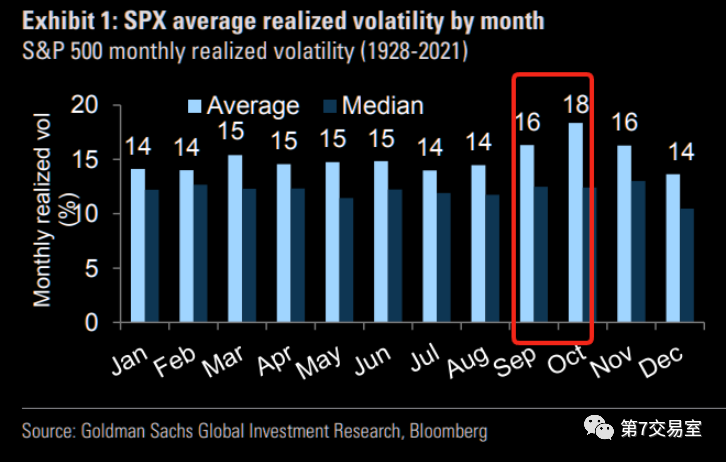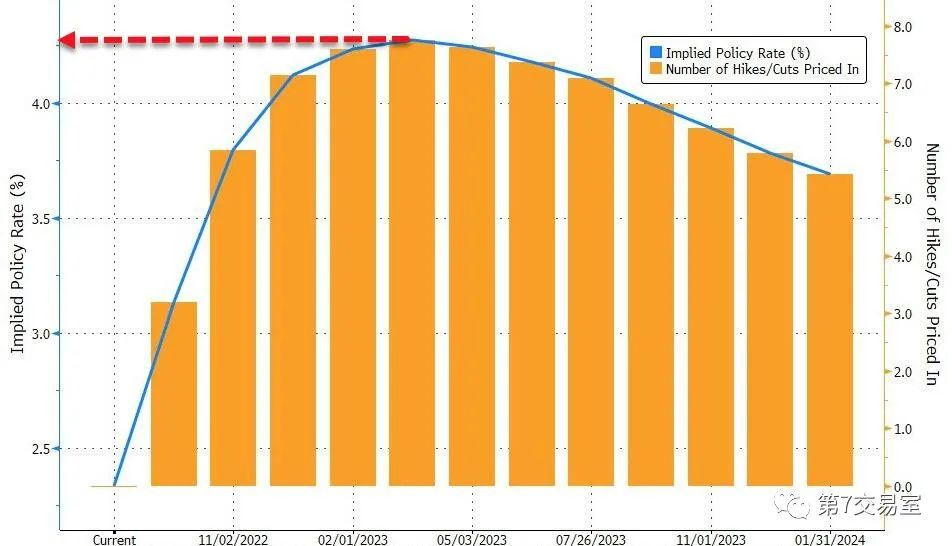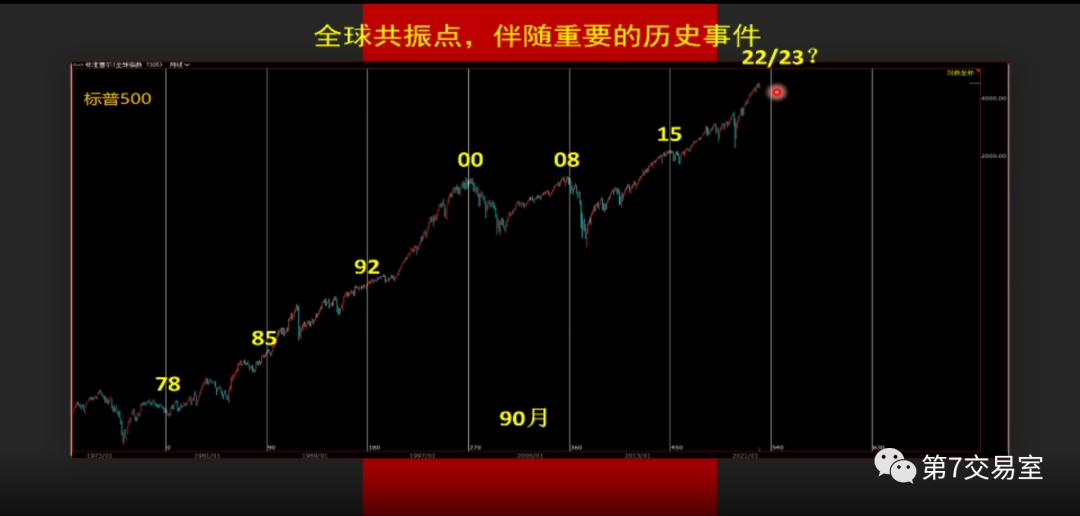Among the average trends of all trading months from 1928 to 2021, the S&P index of US stocks has the greatest volatility in September and October, and it is now over half in September. It is inconceivable what the stock market with greater volatility than September will look like in October.
At present, the possibility of raising interest rates to 4.5% by the end of this year has been priced in the Eurodollar interest rate futures market
This means that there will be a 200 basis point interest rate hike in the next three months or so, and the trend of the 2-year US debt interest rate has no intention of retreating at all, and has been rising in the direction of 4%.
Let's look at another set of statistics:
If we divide the S&P in 1978, 1985 and 1992 into equal periods and make fitting corrections, we will find that there will be a large market shock in about 90 months:
Of course, there are more than one challenge facing US stocks at present, including the early election in October, the Fed's interest rate hike, runaway inflation and so on.
As we all know, November is the month of presidential election, and the election of seats in the two parliaments usually starts ahead of schedule at the end of October and the beginning of November. As far as Biden's current support rate and the image of the Democratic Party among the people are concerned, I am afraid that the Democratic Party's seats in both houses will be in jeopardy.
If Democrats repeat the loss of majority control in both houses as they did in 2014, and even if the president's successor is no longer a Democrat, S&P cannot rule out the possibility of repeating the trend in October and November 2014.
$E-mini Nasdaq 100 - main 2212(NQmain)$ $E-mini S&P 500 - main 2212(ESmain)$ $E-mini Dow Jones - main 2212(YMmain)$ $Gold - main 2212(GCmain)$ $Light Crude Oil - main 2211(CLmain)$



Comments